Description of cucumber varieties for the greenhouse
The rating includes ultra-early and early cucumber varieties bred mainly in Russia. Some of them are designed specifically for growing under cover, while some are suitable for both indoor and open ground.
We are talking about the following 10 varieties of cucumbers:
- Courage - bred in Russia. The early ripening plant has been on the state register of the Russian Federation since 2002. It is grown in all regions of the country, but it is especially in demand in the Moscow region. The fruits appear on the bushes 38-44 days after germination. This culture has unlimited growth.
- Cupid - produces fruits on the 37th day after the sprouts appear. The vegetable is small - about 15 cm long and weighing up to 100 g. The plant is productive - from 1 square meter. m manages to collect up to 14 kg. Amur is characterized by small seeds and a sweetish taste.
- Adam F1 is a Dutch early variety for cultivation on farms and in personal gardens. When ripe, cucumbers are about 7 cm long, have thin skin and juicy, tender flesh. Harvesting can be done 45-52 days after the sprouts form.
- Alex F1 is an early hybrid, ripening 38-42 days after germination. The plant is grown throughout the Russian Federation. It is suitable for cultivation both in greenhouses and in open ground. The bushes are distinguished by long-term fruiting - until September-October.
- April F1 is another early hybrid, allowing you to taste the fruits 1.5 months after the sprouts appear. The length of the vegetables is 15-25 cm, the skin is covered with white spines and large tubercles. The shape is cylindrical, the flesh is sweet, without a bitter aftertaste.
- resident is an early-ripening cucumber variety, ripening 43-45 days after the appearance of the first shoots. It is grown both indoors and outdoors. The vegetable crop is resistant to aphids, mosaics and other pests.
- Pinocchio is cultivated in open and closed ground, on loggias and window sills. It has unlimited growth and delights with delicious fruits 48 days after the sprouts appear. Cucumbers are characterized by thick skin, a sweet taste and the absence of seeds.
- Zozulya is an early cucumber that ripens within 42-47 days from the date of sprout formation. Fruits grow without pollination. The bushes are easy to care for and responsive to feeding. It is better to feed this variety of cucumbers with mineral fertilizers.
- Aristocrat is a Russian-South Korean variety grown throughout the Russian Federation, from South to North. It outperforms its competitors due to its good yield. From 1 sq. m usually yields about 13 kg of cucumbers. The fruits are characterized by a curved, elongated shape and high skin density.
- Capricorn is successfully grown both indoors and outdoors. Pollination by bees is not required for its development, but fertilizing with potassium fertilizers is important. Greens have dense flesh with a sweet taste and a cylindrical shape.
The best soil for plants
Gherkin cucumbers
F1 button
Parthenocarpic hybrid of early ripening. At 40-42, after sprouts have appeared from the seeds, you can look for ripe fruits on the bushes.
The bush is medium-sized, medium-branched, produces female flowers. The ovaries are tied in bunches in knots. Gives a stable harvest in any weather conditions. Not susceptible to pumpkin diseases. The fruits grow about 10 cm in length and gain a weight of about 60-80 g. The skin is dark green with white pubescence and a large number of tubercles. Universal in use.
Friendly family F1
Mid-early hybrid. Not susceptible to pumpkin diseases. On the 43rd day after sprouts appear from the seeds, you can look for ripe fruits on the bushes. The fruits grow about 10 cm in length. From 1 m² you can get 10 kg of vegetables. Universal in use.
Quartet
Self-pollinating hybrid. Not susceptible to pumpkin diseases. The fruits ripen early and grow 9-12 cm in length. Excellent taste and presentation. From 1 m² you can get 11 kg of vegetables. Universal in use.
Daring kid F1
A hybrid that produces female flowers. On days 43-45 after sprouts appear from the seeds, you can look for ripe fruits on the bushes. The bush is medium-sized, the side shoots are independently limited in growth. Not susceptible to pumpkin diseases. In each node, 3-4 cucumbers are formed, no more than 9 cm long and weighing about 40 g. The pulp is dense, crispy, and tasty. Great for pickling and canning. From 1 m² you can get 9 kg of vegetables.
How we chose
A prerequisite for preparing the rating was the presence of a large number of positive reviews for one or another variety in question. We turned not only to the opinions of ordinary gardeners, but also to the thoughts of experienced breeders.
The decision to add specific varieties of cucumber crops to the rating was made based on the following characteristics:
- Year of breeding and inclusion in the register of the Russian Federation;
- Recommended growing region;
- Suitable climatic conditions and soil requirements;
- The need for care and competent agricultural technology - fertilizing, watering, weeding;
- Plant type – indeterminate or determinate (with limited growth);
- Purpose – the ability to grow in open and closed ground, on a windowsill;
- Possibility of growing by seed and seedlings;
- Planting pattern - recommended sowing frequency;
- Quality of germination of seed material;
- Resistance to frost and drought, diseases and viruses;
- Dates and duration of fruiting;
- Productivity (per 1 sq.m.);
- Presentation, shelf life and transportability;
- Taste qualities;
- Length, shape and color of greens;
- Thickness, density and smoothness of the peel, the presence or absence of bumps and thorns;
- Juiciness of the pulp;
- Size, quantity and hardness of seeds (if available).
Also, when analyzing the descriptions of cucumber varieties, we took into account the versatility of the fruit in terms of preparation - rolling into jars, salads, pickling, slicing.
The best phytolamps
Characteristics and features of early cucumbers
Early cucumbers are planted as seedlings : 3-4 weeks before planting in the ground, the seeds are disinfected and sown in prepared containers with soil. The seedling method increases germination, accelerates adaptation to external climatic conditions and ripening time.
Early varieties require special care - due to the short ripening period, fertilizing is applied every week. It is not recommended to overcook ripened cucumbers on the plant; the fruits will become limp and crack, and the yield will decrease.
The best varieties of cucumbers for a greenhouse in the Moscow region
The climate in the Moscow region is suitable for growing vegetables both in open and closed ground. Varieties bred for cultivation in central Russia are relevant. We are talking about two varieties of vegetables; these particular varieties of cucumbers for a polycarbonate greenhouse showed the best yield, as well as resistance to disease and ease of care.
Courage
An early ripening hybrid created by Russian breeders. The plant was included in the state register of the Russian Federation in 2002 and is recommended for cultivation in all corners of Russia. The cucumber performed especially well in the Moscow region, being resistant to temperature changes and high humidity. The variety was bred for cultivation under film shelters and polycarbonate greenhouses and windows. Fruiting begins 38-44 days after emergence.
Courage is suitable for growing in gardens for personal use and on small farms. The bushes are indeterminate, with unlimited growth. Their height reaches 3-3.5 m. Up to 30 fruits appear on one plant. The plant has powerful stems and leaves, so it is planted at a distance of 2-2.5 m per 1 square meter. m. Zelentsy are long - up to 18 cm, cylindrical in shape, weigh about 130 g.
Advantages
- A few seeds;
- Little water inside;
- Moderately sweet;
- Not prickly;
- Thin peel that is easy to peel.
Flaws
- There is a noticeable difference in the size of the fruits on the main vine and on the side shoots.
Due to its adequate response to adverse weather conditions, this variety is suitable for cultivation in the second rotation.
Amur
A hybrid of ultra-early cucumber, ripening within 37-40 days from the moment the sprouts form. The variety was included in the Russian state register in 2000. The plant is suitable for cultivation both in open ground and in greenhouses; it is recommended for cultivation in small farms and gardens. About 8 fruits are simultaneously poured on one bush.
The average weight of cucumbers is 100 g, they are long - up to 15 cm, cylindrical in shape, sometimes slightly curled at the bottom. The stalk is dense and prickly, so it is recommended to harvest the crop with a knife and gloves. The skin is dark green, with spines that often have to be cut off during cooking. It is characterized by the absence of bitter taste and small thickness, so it is convenient to peel vegetables.
Advantages
- Marketable yield – up to 14 kg per 1 sq. m;
- You need to collect fruits 2-3 times a week;
- Not large seeds;
- The fruits easily fit into glass jars when canned;
- Cold resistant.
Flaws
- It bears fruit better in the first month.
Reviews indicate that this variety of cucumber for greenhouses in the Moscow region is best suited for preparing fresh salads.
The best heaters for greenhouses
Late greenhouse cucumbers
Late-ripening species include cucumbers, in which the ripening period for greens is more than 50 days, this time is counted from the moment the first shoots appear from the seeds. They need more time to grow roots and develop bushes. The root system is more developed and provides more nutrition for fruit growth than early ones. They will begin to bear fruit in the second half of the summer season, namely in July.
It is believed that late harvest is better suited for canning.
In order not to be afraid of the changeable weather at the end of the summer months, you can grow this crop in a greenhouse. It will help create favorable conditions for the good growth and development of our green crops. You need to plant the seeds in June; if the weather is good and warm, you can sow them directly into the soil in the garden bed. You can plant, for example:
- Emerald. It has vigorous bushes with medium branching. Medium-sized cucumbers, usually 15-17 cm, cylindrical in shape, weighing 100 - 110 grams each. The skin is smooth, rarely bumpy. They are emerald green in color. Universal in scope.
- Sapphire. Universal hybrid. Resistant to downy mildew. The fruits are cylindrical in shape, with a bumpy surface. Very large 30 - 35 cm and 250 - 350 grams, about 4 cm in diameter. Productivity is high, the last harvests occur in October.
- Alyonushka. It has high taste characteristics, without a bitter aftertaste. They grow to an average length of 10 cm. The collection period is late summer, early autumn. The bushes grow 2-3 meters in length, with medium climbing, the ovary is fascicular, the foliage is rich green.
- Brownie. Hybrid, late fruit ripening. It is famous for its long period of collecting green beauties. They grow neat, 6-8 cm in length. Resistant to a range of different diseases. Mainly used as ingredients for pickling various assorted vegetables and salads.
These varieties are no different in care from early ripening ones. It’s good to have your own vegetables from the garden all the time.
The best self-pollinating cucumber varieties for the greenhouse
Such plants do not require pollination by bees, since everything needed for this is inside the flowers. However, they need to be disturbed, because when grown in open ground, this function is performed by the wind. VyborExpert specialists in the field of gardening studied 6 nominees and, by eliminating the least productive, tasty, and easy to care for, left 3 varieties in the rating.
Adam F1
A variety of Dutch origin from the early category. Cucumber is intended for cultivation in private plots and large farms. The fruits have a neat shape and smooth surface, without thorns, so there is no need to peel them. Adam F1 was entered into the state register of the Russian Federation in 2002. It can be grown both in open ground and indoors.
A ripe cucumber has an average length - about 7 cm. It is characterized by a thin skin and a loose, thin stalk, so it is easy to harvest. The plant is resistant to frost and various pests/diseases: ash grass, mosaic, cladosporiosis. The fruits ripen within 45-52 days from the moment of emergence. The bushes are medium-sized, so high greenhouses are not required for them.
Advantages
- Productivity 8-10.5 kg per 1 sq. m;
- Not dense planting – 30 x 70 cm;
- Weight 90-100 g;
- One-dimensionality of the harvest;
- Commercial quality.
Flaws
- It doesn't lie there for long.
The taste of cucumber is revealed both fresh and pickled. Thanks to their neat shape and small size, they are convenient for filling jars in even rows. At this time, they do not burst due to the high density of the peel.
Alex F1
Early ripening hybrid. The period from germination to fruit harvest lasts 38-42 days. The variety was included in the state register of the Russian Federation in 2007. The plant is approved for cultivation throughout Russia in open ground and under film covers. Cucumbers will ripen until October. The bushes are indeterminate, with unlimited growth, and therefore require garter.
Zelentsy Alex F1 have a cylindrical shape, slightly curved at the top and bottom. The surface is covered with small tubercles, there are no spines. The average length of a vegetable is 10 cm, and its weight is 90 g. This allows you to comfortably preserve cucumbers in 1-2 liter jars. The pulp is dense, with small and not hard seeds. The yield is not the highest, but for personal use this is quite enough - 1.5-2 kg per 1 sq. m.
Advantages
- Product yield of commercial quality – 94%;
- Ease of harvesting;
- Sweet;
- Does not crack during conservation;
- Suitable for fresh consumption.
Flaws
- In the first 10 days, the yield most often does not exceed 1.5 kg.
According to reviews, this self-pollinating variety of greenhouse cucumbers is best consumed raw.
April F1
An early ripening cucumber that begins to bear fruit approximately 1.5 months after the formation of seedlings. The hybrid was bred in Russia and included in the State Register in 1977. The plant pleases with vegetables 15-25 cm long, with a coarsely tuberous and white-thorned surface. They have a cylindrical shape and sweet, without bitterness, pulp. Their average weight is 200 g.
April F1 is resistant to diseases and viruses - mosaic, root rot, olive spot. Green plants are not subject to yellowing and overgrowth in the beds. However, it is recommended to harvest at least once a week. For successful cultivation, 2-3 bushes require 1. sq. m. m of land. Planting is carried out both by seeds and seedlings.
Advantages
- Productivity from 7 to 13 kg per 1 sq. m;
- Friendly appearance of fruits;
- Not bitter peel;
- Cold resistant;
- Resistant to weather changes.
Flaws
- Fruiting depends on the timing of planting.
According to reviews, “April f1” bears fruit best when planted early. Thanks to this, productivity can be increased by 20-25%.
Good Siberian varieties according to reviews from gardeners
Serpentine
A high-yielding variety with a short growing season. Universal in use. The fruits are small. From one square of bed, 1.5 kg of vegetables are harvested in the first days of fruiting.
Miranda F1
An early self-pollinating hybrid, it gives good results in any soil. The bushes are powerful. Cucumbers grow up to 12 cm in length. The skin has yellow stripes and small pimples.
Advice ! Despite its resistance to sub-zero temperatures, the hybrid gives especially good results in fertile soil.
Cascade
Mid-season variety. Not afraid of fungal and bacterial diseases. From 1 m2 you get 7-8 kg of vegetables.
Siberian F1
Early ripening hybrid of parthenocarpic type. Instrumental type of bush. 40-45 days after sprouts appear from the seeds, you can look for ripe fruits on the bushes. Cucumbers grow 10-12 cm in length. White spines are visible on the skin. Universal in use.
The most productive varieties of cucumbers for greenhouses
Fruitful varieties include varieties that produce 10-15 kg of cucumbers per square meter. m. However, this does not mean that plants will be so generous without human intervention. To get as many fruits, you need to regularly water and fertilize the bushes. With good, well-thought-out agricultural technology, 3 varieties of crops can boast excellent results.
Summer resident
Another early ripening hybrid, ripening 43-45 days after germination. It is suitable for growing both outdoors and indoors. But the plant needs pollination by bees, so it is only relevant if you have your own apiary. The bushes are vigorous, unpretentious in care, with high yield - 4-6 fruits are formed per node.
Summer residents are planted in May, when the threat of frost has passed. The culture is resistant to diseases - mosaic, aphids, etc. Biologists recommend eating fresh cucumbers, although reviews show that canned vegetables are no less tasty. Ripe fruits weigh about 90 g and have a length of about 10 cm. Their shape is elongated, cylindrical.
Advantages
- Good seed germination;
- Drought resistance;
- Does not require much space for planting;
- Cucumbers grow compactly, in clusters;
- No thorns on the peel.
Flaws
- Needs regular watering.
This is one of the most productive varieties of cucumbers for greenhouses, which yields 2-3 kg per 1 square meter per harvest. m. Therefore, it is profitable to grow it for the purpose of further sale.
Pinocchio
This variety is included in the rating primarily due to the smoothness of the fruits, as well as the lack of bitterness in the pulp and seeds. This allows you to use it both fresh (for salads) and canned. It is characterized by a sweet taste, with a slight crunch. Collected vegetables do not spoil for a long time and can be stored in the refrigerator for over a week.
Buratino cucumbers have a dense, but not hard or rough skin. If necessary, it can be easily removed with a knife. The plant is cultivated in closed and open beds, on window sills and loggias. The bushes are indeterminate and may require support. The variety pleases with the first greenery already 48 days after the appearance of leaves and stems. But under unfavorable weather conditions, these dates may shift by 7-10 days.
Advantages
- Delicate and glossy skin;
- Juicy pulp;
- No thorns;
- The optimal diameter is 3.5-4 cm;
- The length is no more than 22 cm, which is convenient for canning.
Flaws
- The need for regular feeding.
The weight of one fruit varies around 120-140 g, but smaller cucumbers can also be collected. The timing of the harvest has virtually no effect on the taste.
Zozulya
One of the oldest Russian varieties of cucumbers, included in the state register of the Russian Federation back in 1977. The plant is cultivated in most regions of Russia - Central Black Earth, North-Western, etc. The bushes are designed for growing under film covers and in greenhouses; it is in such conditions that they produce the best harvest. The beginning of fruiting occurs 42-47 days after the appearance of the green part.
Pollination is not required for normal plant development, but if you need to increase the yield, it is recommended. The bushes are unpretentious in care, resistant to weather changes and sensitive to fertilizing. For one sq. It is recommended to sow no more than 6 seeds. During the season it is possible to collect 15-20 kg of vegetables per 1 sq. m. But in the first month you shouldn’t expect good results - the result is no more than 8 kg.
Advantages
- Smooth surface;
- Not sharp thorns;
- Thin skin;
- Sweetish pulp;
- It does not turn yellow for a long time and retains its presentation.
Flaws
- It is not very convenient to compact into jars due to the length of 14-24 cm.
The considered variety of cucumbers for greenhouses is resistant to short-term frosts. The fruits are used for salads and canapes, for cutting and decorating snacks.
Which cucumbers are suitable for growing in greenhouse conditions?
Breeders have developed a large number of varieties of cucumbers. Their characteristics vary. Gardeners have the opportunity to plant plants that ripen at different times, the bushes can be tall and squat, the cucumbers themselves differ in their size and taste, some can only be used for preparing salads, others are suitable for harvesting. Most owners of suburban areas do not have the opportunity to allocate large areas for growing cucumbers. As a rule, beds measuring no more than 1.5 x 3 m are arranged for this crop, or greenhouses and hotbeds are installed, which ensures that fruits will be obtained. But when choosing seeds for indoor soil, it is important to carefully familiarize yourself with their features.
When considering options for varieties of cucumbers, you need to pay attention to several aspects: the method of pollination, the time of fruiting, the characteristics of the fruit, the size of the bush, care requirements, etc.
- Harvesting.
Crops belonging to different categories are suitable for cultivation in greenhouse conditions.
- Super early. Such varieties and hybrids begin to bear fruit 30...35 days after germination. Gardeners can begin harvesting the first cucumbers as early as the end of May (if using the seedling growing method).
- Mid-early. It takes about 45...55 days for the fruits to ripen. As a rule, cucumbers with an average ripening period have excellent taste characteristics and are well resistant to diseases. They are versatile, used for eating, making salads and canning.
- Late. By planting this variety, you can provide your family with tasty fruits until late autumn.
Experienced gardeners try to plant disease-resistant plants with different ripening periods in the same greenhouse. This makes it possible to obtain a harvest over a long period.
- Purpose.
Fruits of any variety can be consumed fresh. But not all ripening cucumbers can be used for harvesting. Therefore, if you want to enjoy harvested products in winter, it is recommended to pay attention to the recommendations of planting material manufacturers.
For pickling, as a rule, choose plants whose fruits do not exceed 8...12 cm in length and weight - 70...80 g.
- Pollination method.
Bees do not fly into greenhouses and greenhouses so often. If you do not want to pollinate the bushes yourself, it is better to plant varieties and hybrids that do not need the help of insects in closed ground. These varieties include: self-pollinating (all flowers have stamens and pistils) and parthenocarpic (their fruits are set without pollination) varieties.
- Bush dimensions.
In greenhouses (any kind: glass, polycarbonate, film) it is better to grow a crop that does not grow too much to the sides. Such bushes take up less space and practically do not need to be formed. It is not convenient to work in greenhouses, so novice gardeners are recommended to grow cucumbers that do not require special care.
You also need to pay attention to the plants’ susceptibility to disease. For many, the fresh shelf life of fruits is important.
The best early varieties of cucumbers for greenhouses
Early varieties include those varieties that require no more than 32-44 days from the moment of germination to form the first fruits. It is precisely these varieties of vegetables that are included in this section of the rating by Vyborexperta.ru experts in the field of gardening and horticulture.
Aristocrat
“Native” from Russia and South Korea, which is grown almost throughout the entire territory of the Russian Federation. But in the southern regions its cultivation in open ground is allowed, and in the northern regions - in hotbeds and greenhouses. The yield is equally high in both cases. From 1 sq. m you can get up to 13 kg of vegetables, so this variety is especially popular among farmers.
Aristocrat has dense pulp and is easy to prepare - it does not spread or break when slicing. Its peel is dense, but quite thin; it is not necessary to trim it. Fruits can be expected 35-37 days after planting the seedlings. Zelentsy have a convex and curved shape, which makes them not very convenient to put in jars. The length of vegetables is about 10 cm, diameter is 3 cm, weight is 150 g, they look neat and retain their presentation for a long time.
Advantages
- There is no excess water;
- Immune to powdery mildew;
- Stability of the harvest regardless of the weather;
- Fast ripening;
- Long-term fruiting.
Flaws
- Pollinated by bees.
The variety is declared as a pickling variety, but has also proven itself well as a salad variety. The plant is resistant to drought and the fruits do not lose their taste as a result of high humidity.
Capricorn
An early cucumber from a Turkish manufacturer, intended for cultivation in open and protected ground. This is a parthenocarpic variety that does not require pollination by bees. It can be cultivated for both spring-summer and summer-autumn rotation. The plants are powerful, so they require a lot of space in the greenhouse. For normal development of bushes, the temperature in the shelter must exceed 15°C.
Capricorn is partial to fertilizing, and it is advisable to feed it with potassium fertilizers. Zelentsy have a cylindrical shape, flattened at the top and elongated at the bottom. The skin is covered with medium-sized tubercles and white spines, but does not prick during harvest. The pulp is distinguished by its high density and aromatic taste. The plant produces most of its fruits in the first month of fruiting.
Advantages
- Small fruit weight - from 100 to 130 g;
- Optimal length – 12-14 cm;
- Not bitter skin;
- Low water content;
- Keeping quality.
Flaws
- Average resistance to powdery mildew.
When deciding which variety of cucumbers is best to plant in a greenhouse, it is necessary to note its high yield. It is due to its ease of care and resistance to a number of viruses/diseases - root rot, mosaic, etc. It is also not afraid of elevated temperatures and transportation.
Requirements for greenhouse varieties
In greenhouse conditions, you cannot plant any varieties of cucumbers.
Expert opinion
Stanislav Pavlovich
Gardener with 17 years of experience and our expert
Ask a Question
IMPORTANT! It is necessary to follow the main rule for closed ground (even if the doors and windows of the greenhouse are slightly open in the summer) - choose only self-pollinating (parthenocarpic) hybrids of new generation cucumbers for planting.
It is desirable that they have other valuable qualities:
- Tolerance (immunity) to the most harmful fungal infections - powdery mildew, peronosporosis (downy mildew).
- Immunity to as many different diseases as possible (root rot, bacteriosis, mosaic virus, cladosporiosis, olive spot).
- Bundle type of ovary.
- Genetic absence of bitterness in fruits (characteristic of the vast majority of modern hybrids, therefore not always indicated in the description of a particular variety).
- Endurance to sudden temperature changes; increased heat resistance.
- High yield potential.
Cucumber hybrids differ in the structure of the bushes - the length of the main vine and side shoots, and the peculiarities of the development of bunch ovaries.
The choice of a specific variety depends on how much time the gardener is willing to spend on shaping the plants (pinching). The frequency of harvesting greens is also important. INTERESTING! Polycarbonate greenhouses can also be placed in slightly shaded places (for example, on the north side of the house, near tall bushes). For such extreme conditions, shade-tolerant cucumber hybrids have been specially created: Tachanka F1, Spino F1, Moscow Evenings F1, Tundra F1, Company Secret F1, Green Uniform F1, General F1, Focus F1, Vivaldi F1, Seasons F1.
The characteristics of the greens (length, type of tubercles, skin thickness, color) are chosen according to your taste.
What type of cucumber is best for a greenhouse?
For growing indoors, indeterminate plants with unlimited growth are most often chosen. By pulling it up and tying it to a support, space is saved, which is so valuable in greenhouses. The selected varieties must be resistant to short-term frosts and not weak to sunlight.
- The “Courage” variety is suitable for cultivation in the second rotation.
- Those who do not like large seeds should pay attention to the “Cupid” type.
- In the North it is better to grow Adam F1, which is resistant to temperature changes.
- If you want to get a harvest until October, you can choose Alex F1.
- For planting with seeds, it is recommended to use April F1, which produces good seedlings.
- If the priority is the volume of products received, then the Summer Resident will be just right.
- Buratino with good keeping quality and transportability is suitable for sale.
- Beginners in the garden can take a closer look at Zozula, which does not require special care.
- Aristocrat performed best in canned form.
- Capricorn is recognized as the most unpretentious in care.
It is best to plant several varieties of cucumbers for the greenhouse, so you can play it safe and get a tasty and rich harvest.
How to choose your own pickling variety of cucumbers
It is not always possible to find in stores the seeds of the varieties recommended by friends or websites on the Internet. You have to choose them yourself from what is on the shelves. When choosing, pay attention to the following characteristic features of pickling cucumbers:
- fruit size up to 12 cm, or preferably smaller;
- thin and lumpy skin;
- rich green color;
- dense pulp without bitterness;
- a small amount of seeds.
You will be interested to know: The best early varieties of sweet peppers for growing in the Urals
This concerns the fruits themselves. And among the varieties, it is best to choose hybrids of the female type of pollination and with bunched ovaries. They must be resistant to cucumber diseases and cold-resistant. These are the varieties of pickling cucumbers for greenhouses and open ground that are described in our article. We tried to select hybrids that are suitable for cultivation in Siberia and the Urals, in the Moscow region, Leningrad region and any other region of the country.
Dutch selection cucumbers
Spring is just around the corner, and it’s time for gardeners to think about what cucumbers to grow this year. If you decide to plant cucumbers in open ground, then you should choose seeds of frost-resistant varieties. If you will grow these vegetables in a greenhouse, then you need to purchase seeds of parthenocarpic, or self-pollinating cucumbers.
Often sellers offer us to buy Dutch cucumbers, claiming that they are very reliable. And this is completely justified. Dutch cucumber varieties are very resistant to various diseases. They are distinguished by high productivity, and the fruits do not accumulate bitterness at all. Let's look at the most popular varieties of Dutch cucumbers.
Dutch varieties of cucumbers for greenhouses
Popular varieties of cucumbers for greenhouses are:
- Angelina is a parthenocarpic ultra-early variety that is not afraid of low light. Delicious crispy fruits reach 14 cm in length.
- Bettina F1 is an early ripening self-pollinating gherkin-type variety. Grows well in low light conditions. The shape of the green fruit resembles a cylinder. Cucumbers have a delicate soft taste without bitterness.
- Hector F1 – early ripe miniature cucumbers. The fruits have a bright green color, pleasant taste and dense pulp, and are well stored.
Dutch cucumbers for open ground
The following varieties are suitable for growing in open ground:
- Green Peak F1 is an ultra-early gherkin-type cucumber hybrid. Smooth, light green cucumbers have excellent taste. The hybrid is particularly resistant to diseases.
- Sonata F1 is an early hybrid, resistant to adverse weather and various diseases. The fruits are often used for pickling and pickling.
- Octopus F is a hybrid with a growing season of up to 48 days. The lumpy fruits are dark green in color, cylindrical in shape, and have no bitterness. They have excellent taste both fresh and canned.
Choose varieties of cucumbers of Dutch selection, and you will have tasty and healthy fruits on your table all season long.
womanadvice.ru
What are parthenocarpic varieties, and which ones are best planted in greenhouses?
To form an ovary, pollination is necessary. In open ground, insects help with this. But what about plants that grow in greenhouses? For this purpose, there is a certain type of cucumber crop, which is called parthenocarpic. These are hybrids that are capable of producing fruits without pollination. Barren flowers cannot appear on them and there are no seeds in the cucumbers themselves.
When choosing a variety, you need to consider the size of the greenhouse. After all, bushes can be short or tall, with no growth restrictions. And to accommodate more seedlings, give preference to less branched crops so that the vines do not interfere with each other. And of course, you should remember the intended use and taste characteristics of the chosen type.
The best parthenocarpic green crops for greenhouse conditions:
- A real colonel. An early ripening species with a courageous name. It can withstand minor cold snaps and even frosts. The shape of the greens is elongated, oval 12 - 15 cm, slightly arched. They have a loose skin with barely noticeable light stripes. More suitable for fresh salads, or eaten directly from the garden.
- Neva. Salad, mid-early variety with female flowering. No more than 2 ovaries are formed in a node. From which grow large fruits of 200 - 220 grams, having an elongated shape resembling a cylinder. In greenhouse conditions, you can collect from 1 square meter to 25 kg of green, tasty beauties.
- Cornucopia. Early ripening, has only female flowering, self-pollinating. Resistant to powdery mildew, target and olive spot, to various viruses, including yellowing of cucumber veins. Has bunched ovaries, medium height. The fruits are small, up to 12 cm, and 80 - 90 grams. Excellent in pickling and barrel salting.
- Five Stars. The fruits ripen on day 40, which is ultra-early. A bouquet contains 3-4 flowers and does not require pollination by insects. When mature, they are quite miniature, 10 - 12 cm and no more than 110 grams. The scope is universal.
Peculiarities
When buying seeds, you should pay attention not so much to a bright picture and loud advertising promises, but to information about the characteristics of the plant. It would be a good idea to first find out whether the variety you are interested in is registered in the State Register. Next you need to understand practical issues:
| Characteristic | Description |
| Growing conditions | Open or protected ground. At the same time, the concept of “protected” includes both temporary film shelters and stationary structures, for example polycarbonate greenhouses |
| Zoning | This indicator is more relevant for cultivating cucumbers in open ground, but it is also recommended to take it into account for greenhouse conditions. Many hybrid varieties are well adapted to the climatic conditions of individual light zones or regions (for example, cucumber hybrids for the Urals or Siberia have sufficient cold resistance and shade tolerance) |
| Purpose | According to their intended purpose, cucumbers are classified as salad, pickling and canning. There are also universal ones that have excellent taste when fresh and do not lose them during fermentation or heat treatment. |
| Plant growth and climbing ability | The most common cucumbers are indeterminate (unlimited in the growth of the central stem), but there are also determinate (bush and semi-bush forms), in which the main fruiting is observed on the lateral shoots |
| Ripening time | According to ripening time (from full germination to fruiting), cucumbers are divided into early or early ripening (up to 45 days), mid-ripening (45-50 days) and late ripening (over 50 days). |
| Pollination | All original varieties of cucumbers are bee-pollinated, that is, the ovaries on them develop as a result of fertilization of female flowers with pollen from male flowers with the participation of insects. For protected soil conditions, parthenocarpic hybrids have been specially bred that do not require pollination (they are often mistakenly called self-pollinating) |
| Disease resistance | Greenhouse conditions are favorable not only for plants, but also for various fungal diseases inherent in them. In this regard, it is preferable to plant seeds of hybrids that are resistant or tolerant to cladosporiosis (olive spot), MP (powdery mildew), ascochyta blight (black stem rot), peronosporosis (downy mildew), etc. |
Having considered the listed characteristics, we can conclude that the best varieties of cucumbers for a greenhouse are
- parthenocarpic;
- indeterminate (in the presence of supporting structures with tensioned trellises or nets);
- universal purpose;
- resistant to diseases.
Many gardeners select the best varieties of cucumbers for a polycarbonate greenhouse in such a way as to ensure harvest throughout the year
You should immediately clarify the wording of the “variety”, since only hybrids obtained as a result of selection are parthenocarpic. The main task when breeding hybrids is to achieve improved properties by combining the most valuable qualities inherited from different parent varieties, for example, the yield of one and the endurance of another. True, such combinations are unstable and provide the promised result only in the first generation.
On packages with seeds of hybrid cucumbers, their name contains the designation F1, which stands for “children” (from the Italian figli) of the first generation (1).
Now let's move on to considering the best varieties of cucumbers for polycarbonate greenhouses (according to reviews from experts and amateur vegetable growers), intended for different regions.
Dutch varietal greenhouse cucumbers
Along with Russian species, summer residents also love foreign cucumbers. These include the Dutch. Breeders have invested in them immunity to many diseases, fungi and rot. These are the few that can withstand short-term frosts. Separately, it is worth noting the massive and successful maturation of the ovaries.
They are also grown first in the form of seedlings, then transplanted into a greenhouse. The time for sowing seeds depends on the ripening period; it is indicated on the package. Favorites are:
- Gunnar. Tall plant with a well-developed root system. It can bear fruit for a long time, during the ripening period, every 2-3 days it is necessary to collect the handsome ones from the bush. The peel is dense, uniform in color, turning white at the tip. The pulp is juicy, with a pleasant fresh aroma.
- Passandra. It has smooth, rich green fruits, slight ribbing along the entire length is visible, medium in size, approximately 15 - 18 cm. They are well transported and stored. Fruiting begins after 42-45 days.
- Dolomite. Bushes of medium height grow, the side shoots are active. It tastes without bitterness, without emptiness in the center. The length is 12 - 14 cm, the shape is elongated, oval. It is widely used in various winter preparations.
- Amur. A hybrid that produces massive yields produces 8-10 flowers in each bouquet ovary. These babies grow 10 - 12 cm in size, they can be picked at an earlier age and used for rolling into jars. They have small spines and white fluff, which disappears as they mature. Tolerates hot temperatures well and quickly adapts to changeable weather conditions.
Dutch varieties prefer low acidity soil. Fertilizers are suitable with a high content of nitrogen and phosphorus, but moderation must be observed in everything; an excess of nutrients will negatively affect the stem and leaves. Over time, they will begin to turn yellow and stop bearing fruit.
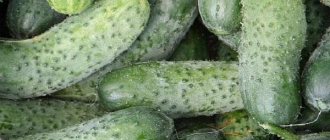
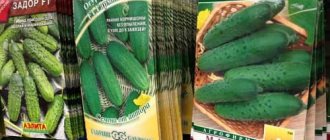

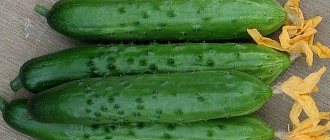

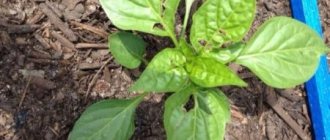
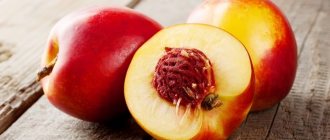
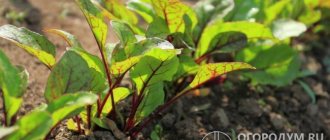
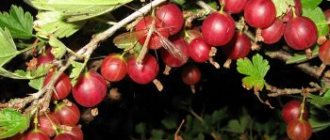
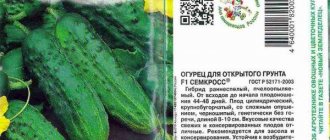

![Tinkoff (Debit card) [CPS] RU](https://adzumi-sushi.ru/wp-content/uploads/tinkoff-debetovaya-karta-cps-ru41-330x140.jpg)